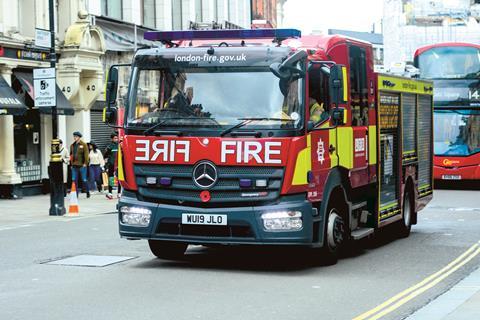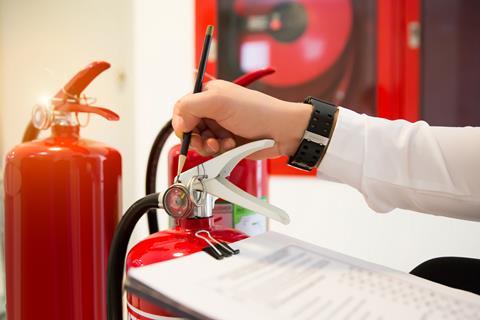More than two years after the Grenfell Tower fire, the first phase of the Grenfell Tower Inquiry report has been released – and it has significant implications for property owners and managers.

More than two years after the Grenfell Tower fire, the first phase of the Grenfell Tower Inquiry report has been released – and it has significant implications for property owners and managers.
The first phase of the inquiry focused on the events of the night of the fire, while the second phase, which will start early next year, will cover the wider causes and issues. However, many of the recommendations from the first phase for both the London Fire Brigade (LFB) and the government also require property owners and managers to take direct action.
So to what extent does the report hold property owners and managers to account for fire safety in buildings?
Martin Moore-Bick, chair of the inquiry, makes several recommendations for improving the LFB service that require direct action from property owners and managers. Owners and managers are required to draw up evacuation plans and provide them to the local fire services as well as placing them in an onsite information box.
The report also suggests that owners or managers should check fire doors at least every three months. Moreover, it says they should provide details of external walls and materials used, as well as high-rise building plans, to local fire services. It is also recommended that they inspect lifts in every high-rise that might potentially be used by firefighters.
Points for property owners
Graham French, consultant at law firm Russell-Cooke, who has been working directly with more than 20 residents of Grenfell Tower and their families “since day one”, says there are two significant points that affect property owners: an architectural crown (a purely aesthetic structure added to the top of the building) contributed to the spread of the fire, as did fire doors that were not working properly; and, more importantly, the tower was not fully in compliance with building regulations.
“We all knew this but the fact that we now have a finding to that effect means we don’t have to establish causation. Now we can identify which individuals, institutions and companies were responsible for this breach. This will open the way for criminal convictions,” he says.

French notes that while the long-term implications for property owners will be far-reaching, many of these outcomes will not become clear until phase two of the report. He believes the full consequences for the industry and those responsible for the fire will not be apparent until 2022.
However long it takes for the findings of the report to emerge, French adds that “the Grenfell disaster should be a watershed in how fire safety is dealt with in the property sector”.
The second phase of the report will deal with any further changes the property industry needs to make. But for now, it is the actions of the LFB on the night – and its standards in general – that have been in the spotlight.
Although Moore-Bick praises the efforts of individual firefighters, he provides recommendations that require “urgent action” on behalf of the government and the LFB.
Inadequate measures
Moore-Bick is critical of the LFB’s planning and preparation for fires on the scale of that which occurred at Grenfell Tower, calling its measures for such events “gravely inadequate”. He points out that the senior officers and incident commanders in attendance were ignorant of the risks presented by combustible cladding as well as how to organise an evacuation.
To avoid the future spread of fires in high-rise buildings, Moore-Bick sets out a series of recommendations. He calls for fire services to develop policies for partial or total evacuation of burning buildings, and for all fire services to have smoke hoods that can be used to evacuate residents down smoke-filled staircases.
Critical of the gaps in training that became evident during the handling of the Grenfell fire, Moore-Bick also suggests a revision of the training of firefighters in how to inspect high-rise buildings and to improve communication between the control room and the commanding officer on the ground.

While these specific recommendations are in response to the perceived shortcomings of the LFB, mayor of London Sadiq Khan defended its services in his response to the report.
“It wasn’t [the firefighters’] fault that a building designed for people to safely ‘stay put’ in their homes was so fatally compromised,” he said.
However, he also agreed there were “significant lessons to be learned” for the LFB and said he would ensure that the report’s recommendations were implemented.
Khan also criticised the government for failing to act since the fire. While applauding the LFB’s “commitment to making real improvements”, including working to persuade the government to make sprinklers compulsory, Khan added: “Sadly this has fallen on deaf ears so far and ministers have failed to act quickly on what is clearly a national emergency.”
Urgent action
Both Boris Johnson and housing minister Robert Jenrick recently announced that the government would accept all of the findings in the report. In response to Khan’s criticism of ministers’ inaction, a spokesperson for MHCLG told Property Week: “The government has acted urgently to ensure that residents are safe in their homes and we never see a devastating tragedy like the fire at Grenfell Tower again.”
The government has taken a series of measures to get rid of combustible cladding since the fire. Alongside committing £600m to help building owners with the removal of cladding, it will publicly name owners that fail to do so.
In addition, the number of problematic buildings where the remediation plan for unsafe cladding was unclear has dropped from 22 to only one as a result of an unnamed major developer, which owned 20 of these buildings, agreeing to fund the removal of the combustible cladding. This was announced during the parliamentary debate following the publication of the inquiry report on 25 October.
So while there is a long way to go before the final stage of the inquiry presents its findings, there is already plenty for the property industry to reflect and act on in this first phase. The impact of the Grenfell Tower fire on the design, construction and maintenance of the UK’s tall buildings will be felt for many years to come.






























No comments yet